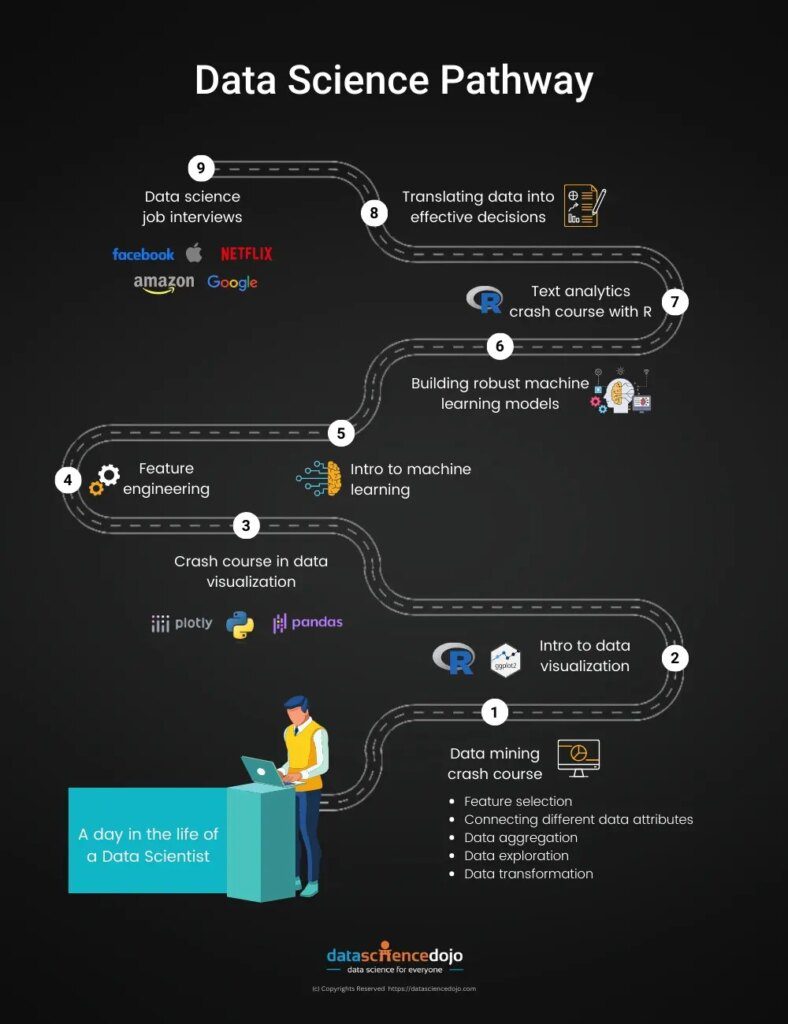Machine learning is a subset of artificial intelligence that allows computer systems to learn and improve from data without explicit programming. This crash course provides a comprehensive introduction to machine learning for aspiring data scientists. It covers supervised learning, where algorithms are trained on labeled datasets to predict outcomes, unsupervised learning, which involves training on unlabeled datasets to find patterns, and reinforcement learning, where agents learn to make decisions based on feedback. The course also introduces common machine learning algorithms such as linear regression, decision trees, random forests, and support vector machines. Evaluation metrics like accuracy, precision, recall, and confusion matrices are also discussed. The course emphasizes the importance of practice and hands-on experience to master machine learning concepts.
Machine Learning 101: A Crash Course for Aspiring Data Scientists
Introduction
Machine learning is a rapidly growing field that offers exciting opportunities for those interested in data science. Whether you’re a beginner looking to enter the field or an experienced professional seeking to expand your skillset, this crash course will provide you with a comprehensive introduction to the world of machine learning.
Understanding Machine Learning
Before diving into the technical details, it’s important to understand the essence of machine learning. At its core, machine learning is a subset of artificial intelligence that focuses on giving computer systems the ability to learn and improve from data without being explicitly programmed.
Supervised Learning
One of the fundamental branches of machine learning is supervised learning. In supervised learning, the algorithm is trained on a labeled dataset, where both input and output variables are known. The goal is to build a model that can accurately predict the output variable for new, unseen inputs.
Unsupervised Learning
In contrast to supervised learning, unsupervised learning involves training the algorithm on an unlabeled dataset. The algorithm learns patterns and structures in the data without any predefined labels. Unsupervised learning can be used for tasks like clustering and dimensionality reduction.
Reinforcement Learning
Reinforcement learning is a type of machine learning where an agent learns to make decisions by interacting with its environment. The agent receives feedback in the form of rewards or punishments, allowing it to learn which actions maximize its cumulative reward over time.
Machine Learning Algorithms
Machine learning algorithms are the building blocks of any data scientist’s toolbox. Here are a few common algorithms:
Linear Regression
Linear regression is a supervised learning algorithm that models the relationship between a dependent variable and one or more independent variables. It assumes a linear relationship between the input variables and the output variable, making it useful for predicting continuous values.
Decision Trees
Decision trees are versatile supervised learning algorithms that can be used for both classification and regression tasks. They create a flowchart-like model where each internal node represents a test on a feature, each branch corresponds to the outcome of the test, and each leaf node represents a class label or a numerical value.
Random Forests
Random forests are an ensemble learning method that combines multiple decision trees to make predictions. Each tree in the random forest is built on a subset of the training data and a random subset of features. The final prediction is made by aggregating the predictions of individual trees.
Support Vector Machines (SVM)
SVM is a popular supervised learning algorithm used for classification and regression tasks. It finds the best possible hyperplane that separates the data into different classes, maximizing the margin between the classes. SVM can handle high-dimensional data and is effective even when the data is not linearly separable.
Evaluating Models
Once you’ve built a machine learning model, it’s crucial to evaluate its performance. Here are some common evaluation metrics:
Accuracy
Accuracy measures the proportion of correct predictions made by the model. It is calculated by dividing the number of correctly predicted instances by the total number of instances in the dataset.
Precision and Recall
Precision measures the proportion of correctly predicted positive instances out of all instances predicted as positive. Recall, on the other hand, measures the proportion of correctly predicted positive instances out of all actual positive instances.
Confusion Matrix
A confusion matrix provides a summary of the performance of a classification model. It displays the number of true positives, true negatives, false positives, and false negatives, allowing you to assess the model’s predictions against the actual values.
Conclusion
Machine learning is a fascinating field that continues to revolutionize industries and expand the possibilities of technology. This crash course has aimed to provide aspiring data scientists with a solid foundation to start their journey in machine learning. Remember, practice and hands-on experience are key to mastering these concepts, so dive in and explore the endless applications of machine learning!
